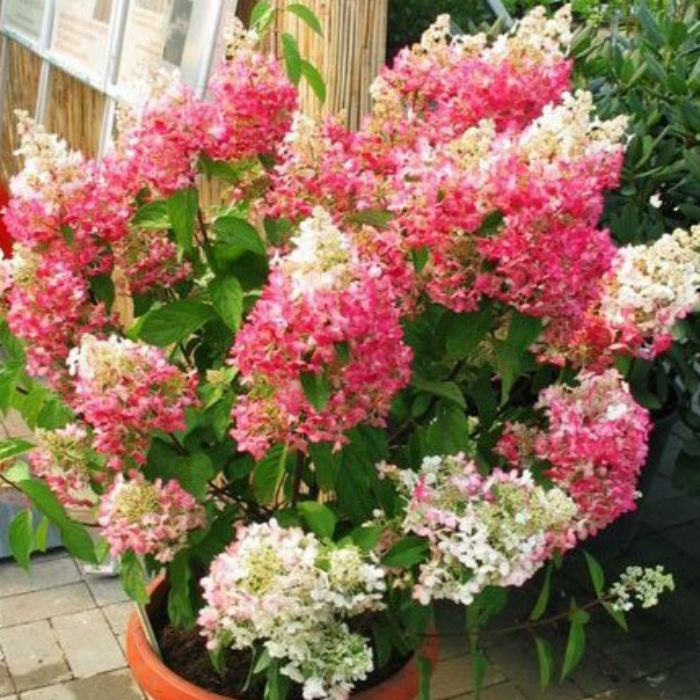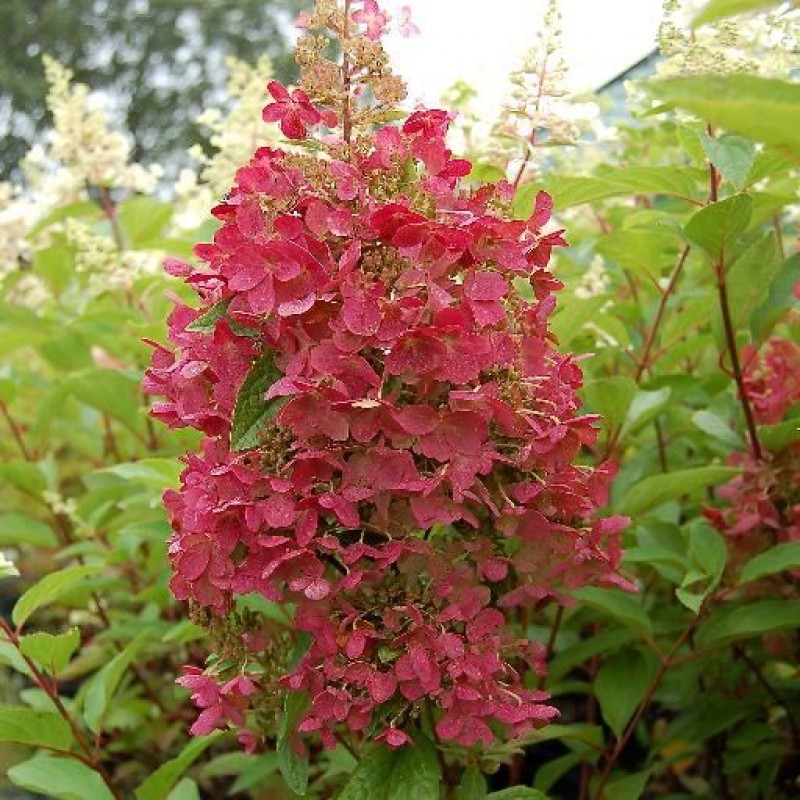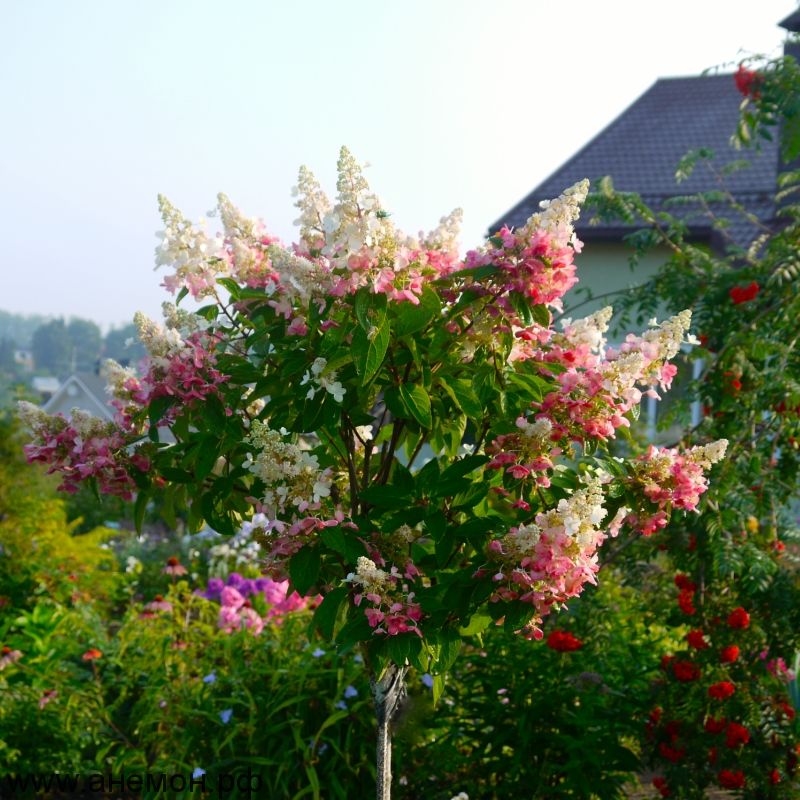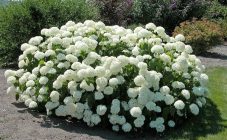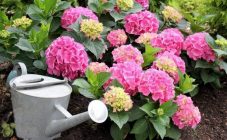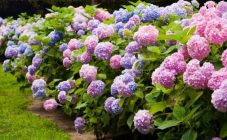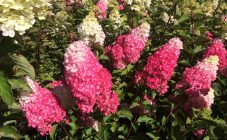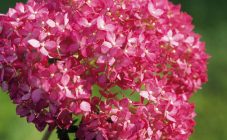Content:
Hydrangea Pinky Winky is a panicle variety derived from another variety - Pink Diamond. This type of plant requires special growing conditions. Below are the characteristics of the variety, the rules of planting and the fight against flower diseases.
Description of the variety
The description of the Pinky Winky hydrangea says that it is a perennial deciduous plant from the Hortensia family that grows in the form of a bush. Due to its winter hardiness, it grows well in Central Russia.
All hydrangeas are melliferous and have medicinal properties. Their roots and shoots are used for the prevention of urolithiasis and the treatment of diseases of the genitourinary system. A decoction of leaves and flowers helps in the treatment of:
- sore throats;
- tonsillitis;
- pharyngitis;
- stomatitis.
Choice and conditions of detention
There are nuances in growing Pinkie Winky that a novice florist should know about in advance, although at first glance everything seems pretty standard.
Seat selection
Pinky Winky hydrangea has a well-developed root system that lies close to the soil surface. This means that when choosing a site for a flower, it is worthwhile to immediately allocate a permanent place, since it will not tolerate frequent transplants.
In the heavily shaded flower beds, Pinky Winky blooms weakly, and the petals of its buds become pale. At the same time, the scorching sun can cause burns on the leaves. Therefore, you need to choose places with shade, but well-lit half of the day.
The growth of hydrangeas is negatively affected by the neighborhood with plants that have a superficial root system, since the shrub will not have enough nutrients. It is worth considering carefully the choice of Pinkie Winky's "neighbors".
You also need to take into account that these plants do not take root well in areas where groundwater passes close by.
Climatic conditions: air, temperature regime
Pinky Winky feels good in all climates. It blooms beautifully in the mountains of the Urals, and in the Leningrad region, and even in the Far East. But especially lush and long flowering will delight amateur gardeners in the southern part of Russia, as there are more warm days.
The soil
Hydrangea is capricious about the quality of the soil. She needs loose and light soils. Only acidic soils with a pH level of 4.5-5.5 are suitable, alkaline and neutral Pinky Winky soil is not recommended. But if there is no other option, then it can be flavored with peat or a special agent (for example, esid +).
Plants prefer only fertile soil, so it must be constantly fertilized. Experienced gardeners recommend periodically making organic fertilizing.
How to prepare for boarding
For a good future flowering of hydrangea, before planting it, you need to carry out some preparatory measures:
- First you need to choose seedlings.You are more likely to purchase a quality plant from a dedicated nursery or garden center. This ensures that the seedling is healthy and of the correct variety. You also need to ensure that the roots are closed from external influences - the plant should be sold in a container.
- Prepare a hole for planting. Its depth and width should be 50 * 60 cm. It is recommended to water the place well with water before planting. The distance from hole to hole should be about 1.5 m.
- Prepare the planting mixture. For its preparation you need: peat, humus, rotted foliage, sand. Gardeners can sometimes add flower soil for azaleas and fallen needles.
- Prepare the plants. Before planting seedlings, they must be carefully examined and the roots and shoots should be slightly trimmed.
Planting process
It is recommended to plant hydrangeas with the onset of early spring, as this allows them to take root and gain strength to survive the winter. Also, it is not prohibited to plant hydrangea bushes in open ground in the autumn.
The planting process is carried out in the following order:
- Place the seedling in the hole and cover with the prepared planting mixture (the root collar of the plant should remain at ground level).
- Hands need to compact the earth around.
- Water the seedling abundantly.
- Mulch the soil.
- Provide regular watering of the bushes for the first few days after planting.
Further care rules
After planting, it is early for the grower to relax, since then there will be constant care for the shrub.
Watering
Each bush needs about 20-40 liters of water, depending on the weather conditions. For spring and autumn, watering is recommended once every 2 weeks, and for summer - once every 7 days. In especially hot weather, the frequency of watering the bushes is increased up to 2 times a week.
Watering rules:
- Cold, hard, stagnant, or tap water will not work.
- Falling buds and flowers can cause water to splash on them during watering.
- The ideal time to water is early morning and evening.
Top dressing
Top dressing is needed at least 4 times during the season. This will help the plant grow well and bloom brightly. But you need to feed the flower correctly. To make Pinky Winky stronger, it is recommended to dilute manganese (0.2 g of powder per 1 bucket of water) and water the bush with this solution once a month.
Before fertilizing, you need to water the flowers so that the roots do not get burned.
Some gardeners use ash to fertilize their garden flowers. But it is for hydrangeas that it is harmful, as it makes the soil alkaline.
Pinching, trimming
By regularly pruning the hydrangea, the plant will give the gardener new shoots and bloom profusely.
The first procedure is performed in March, when the kidneys begin to swell. In April, pruning is no longer performed due to the beginning of sap flow, since the removal of excess branches can threaten the life of the plant.
Shoots with dead growth should be cut off, and the rest should be cut according to the age of the described flower. A young bush can be shortened to the 5th bud, an adult to a 5-7 cm hemp. The cut is made above the bud.
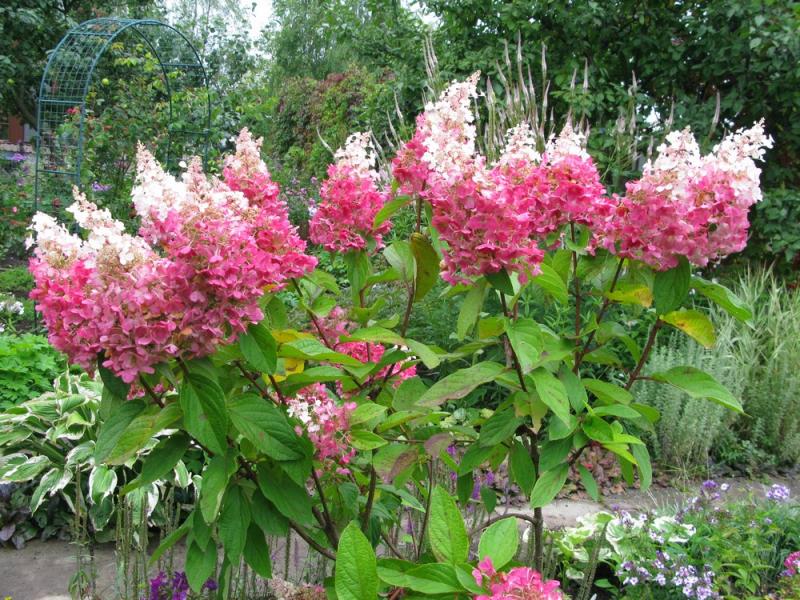
By regularly pruning the hydrangea, the plant will give the gardener new shoots and will bloom profusely
In addition, you need to remove branches that grow inward. This is a kind of prevention of various diseases and parasitic insects that spread through the dense crown of the bush.
Pest control
If Pinky's care is carried out correctly, then the flower is not susceptible to infection with various kinds of pests, but it can still happen. The most common parasite is the leaf aphid, which, when multiplying rapidly, is capable of forming large colonies.
When aphids appear, take the following measures:
- Rinse the entire plant with a jet of water.
- Treat the flower with garlic or soap-tobacco infusion.
- Rinse with a decoction of potato or tomato tops.
- Treat all branches with soda dissolved in water.
- It is also recommended to use special products (for example, spark-bio or aktara).
- You can plant some dill, fennel, lavender, or marigolds nearby. Their scent repels aphids.
- It is also recommended to grow violets in the neighborhood. These flowers are capable of attracting ladybirds that feed on aphids.
- Slugs and snails must be collected by hand.
If provided with proper care, then the Pinky Winky panicle hydrangea will decorate gardens and flower beds with lush flowering for many years, making the landscape in front of the house more attractive.
